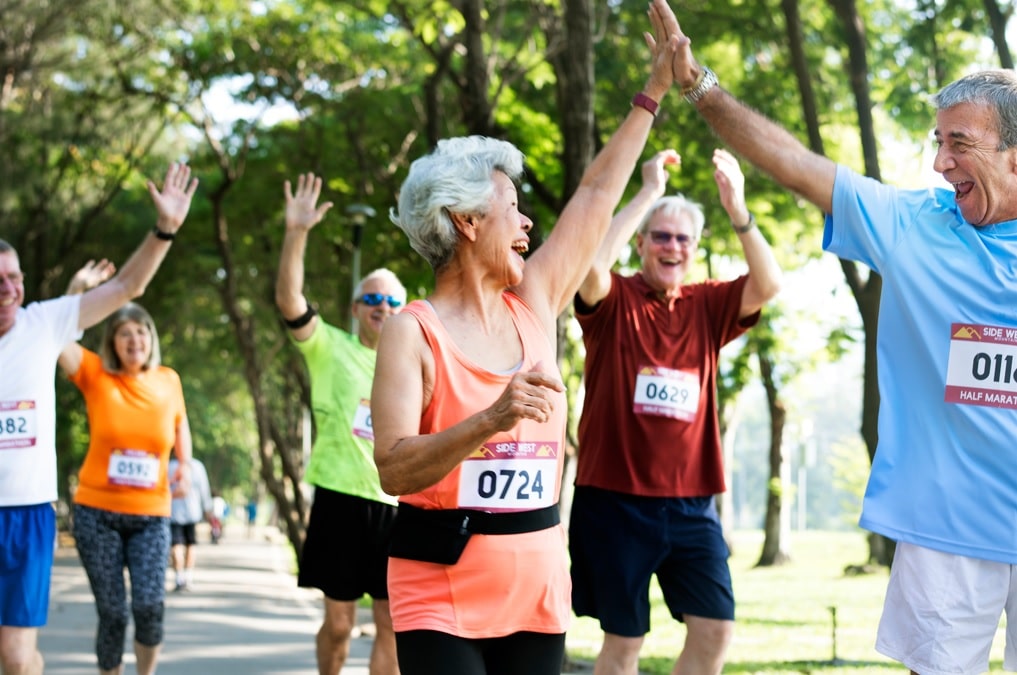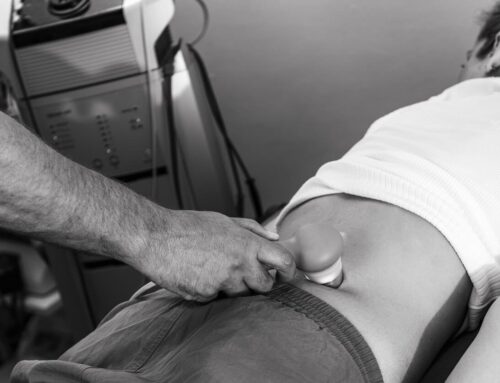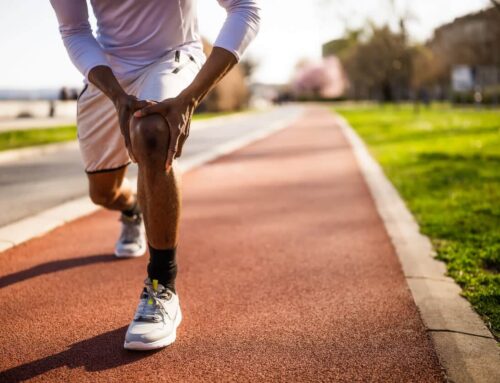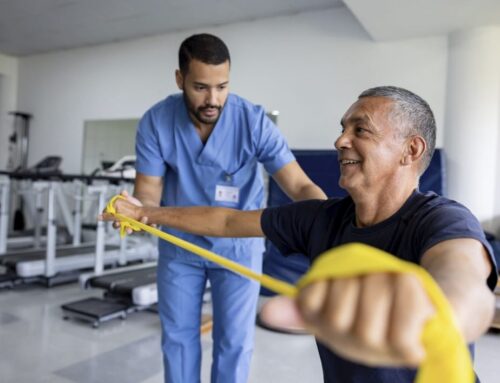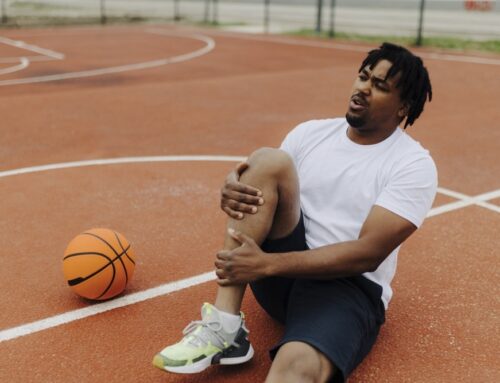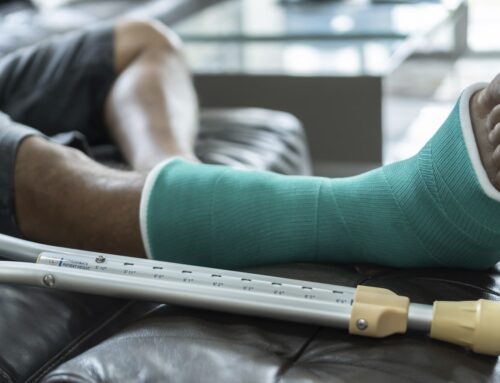Maturing athletes may be more prone to injuries and muscle strains because of joint wear and tear from years of playing sports and participating in other physical activities. As sports medicine specialists, our orthopaedic doctors, physician assistants and physical therapists routinely work with patients like these. In this article, we offer tips for the aging athlete to prolong joint health and maintain a level of competitiveness.
Strength train
Build and maintain muscle and bone mass by incorporating strength training into your weekly routine. According to Cary Ortho’s physician assistant Kevin Morrison, overtraining with cardiovascular exercise and neglecting to build strength through resistance training can lead to weakness and predispose you to injury.
In addition to traditional strength training exercises, aging athletes can try blood flow restrictive training (BRF) under the guidance of a physical therapist. This method gives you the benefits of rigorous training with less intensity. It triggers the body to build muscle mass without the heavy loads on joints.
Stretch
You should be stretching before and after any physical activity, but the type of stretching matters.
Dynamic stretching should be done before beginning an activity, using the body’s full range of motion to warm up your muscles. These stretches can also improve your speed and agility. Dynamic stretches include shoulder rolls, arms circles, lunges and straight leg kicks.
After your activity, static stretching will cool down your body, elongate your muscles and improve flexibility in your joints. These stretches should be held in position so the muscles and joints can release tension. Static stretches include movements to stretch your main muscle groups like the hamstrings, hip flexors, quads, shoulders and core.
Wear (and use) proper gear
Almost every activity requires some type of equipment, from running shoes to ski gear to a well-fitted road bike. Always use the appropriate type of gear and properly sized equipment to protect your body from injury or strain. These tips cover the basics:
- Wearing supportive footwear during physical activity can provide cushioning to lessen the impact on your joints and help you avoid foot and ankle injuries. Running stores can help you find the right shoes for your foot size, shape and activity.
- Orthotic inserts can provide extra cushioning and relief from conditions like plantar fasciitis, arthritis and chronic pain. Ask your physician or physical therapist at Cary Ortho about custom orthotics made specifically for your feet.
- If you have inflammation in your joints that worsens when exercising, try wearing a brace to reduce pressure and provide stability.
- Compression sleeves increase blood flow to the painful area, which helps reduce pain during activity and the potential for post-workout swelling.
Rest after activity
Rest is important for athletes of all ages because it allows the body to recover. As we age, muscles need more time to rebuild and grow stronger. Allowing your joints to recover from intense activity can reduce the risk of future injury.
If you experience pain or injury during physical activity, you must allow your body time to rest and heal. As an aging athlete, you may not bounce back as quickly as when you were younger. You should participate in less strenuous activities until your pain has subsided.
Fuel your body
A healthy diet can help prevent problems that come with age, like heart disease and diabetes. Active older adults will benefit from nutrient-dense foods to fuel them through their favorite sports and exercises.
Foods high in sugar and carbohydrates have higher inflammatory markers in the body that can contribute to chronic joint pain, so monitor what you eat.
Always drink water before, during and after physical activity, but water is essential even on your off days. Calculate how much water you should drink every day. You can also add water-rich foods like watermelon, tomatoes and cucumbers to your diet.
Introduce preventative measures
Conditions like tendonitis and degenerative disc disease are especially common in “graying” athletes, according to Cary Ortho’s Dr. Douglas Martini. Preventive measures can help reduce the risk of injury and joint damage. We suggest several ways to monitor your joint health as an older athlete so you can be aware of changes and take steps to prevent further damage:
- Schedule annual orthopaedic exams to identify at-risk areas, including regular X-rays to monitor joint degeneration.
- Seek out physical therapy for rehabilitation if you have an injury to learn how to strengthen your muscles and techniques to prevent other accidents.
- When over-the-counter, nonsteroidal, anti-inflammatory drugs (NSAIDs) like ibuprofen do not provide relief, you may be a candidate for prescription strengthen medications to help alleviate pain.
- Supplements like fish oil, glucosamine and chondroitin can also be added to a comprehensive plan to promote joint health and provide relief. Be sure to talk to your doctor before taking a supplement; some have side effects or may interfere with other drugs.
- You may be a candidate for non-surgical treatments like orthopedic injections for pain relief and symptom management. Our orthopaedists may recommend one of the following:
-
- Anti-inflammatory steroid injections to relieve pain and inflammation in one area of the body
- Viscosupplementation injection of a gel-like substance that decreases joint friction and improves the range of motion
- Platelet-rich plasma (PRP) injections to accelerate healing
- Stem cell treatments that use your own cells to treat osteoarthritis and soft tissue injuries
Evaluate your level of competition and intensity
No aging athlete wants to hear this, but if you still have pain and discomfort and surgery is not an option, you may need to decrease the intensity of your activities. Many low-impact exercises like walking, biking or swimming can relieve stress on your joints. You can also mix up your routine by cross-training to work out different muscle groups and lessen the load on your joints.
Make an appointment
People who are inactive are more likely to develop health problems earlier, so do not let the aches and pains of aging keep you from your favorite sports and physical activities. Call Cary Orthopaedics to see a specialist who can help you stay active.

